
BLOOMSBURG, PENNSYLVANIA
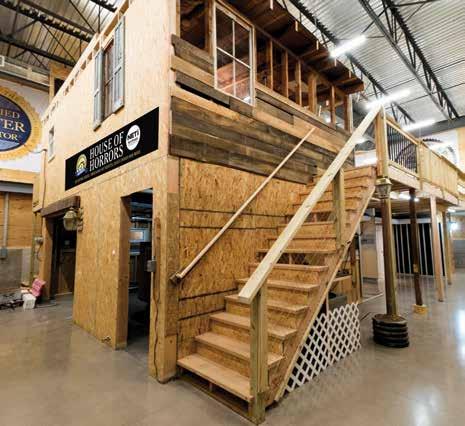

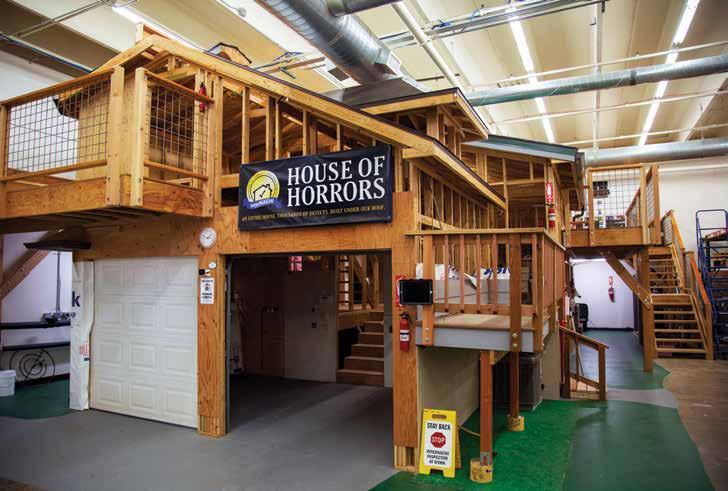









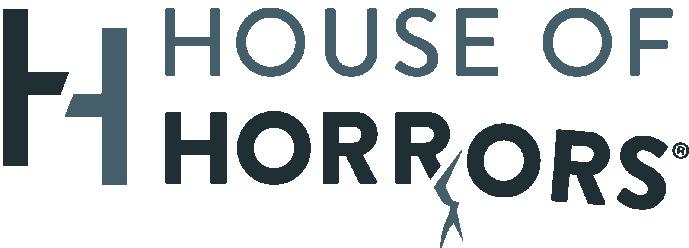









































































































































































































































































































































































































































































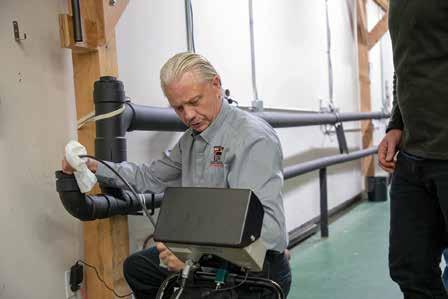
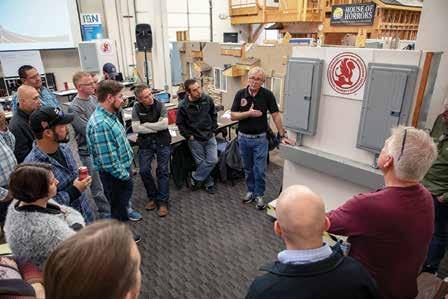

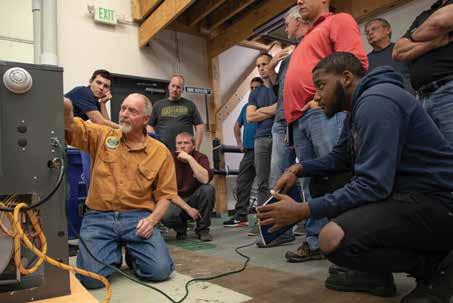

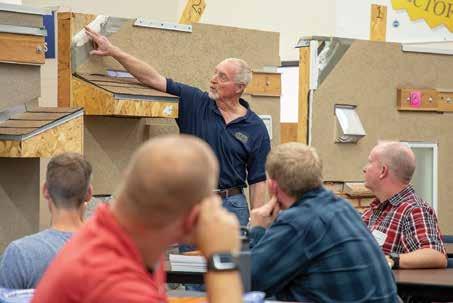
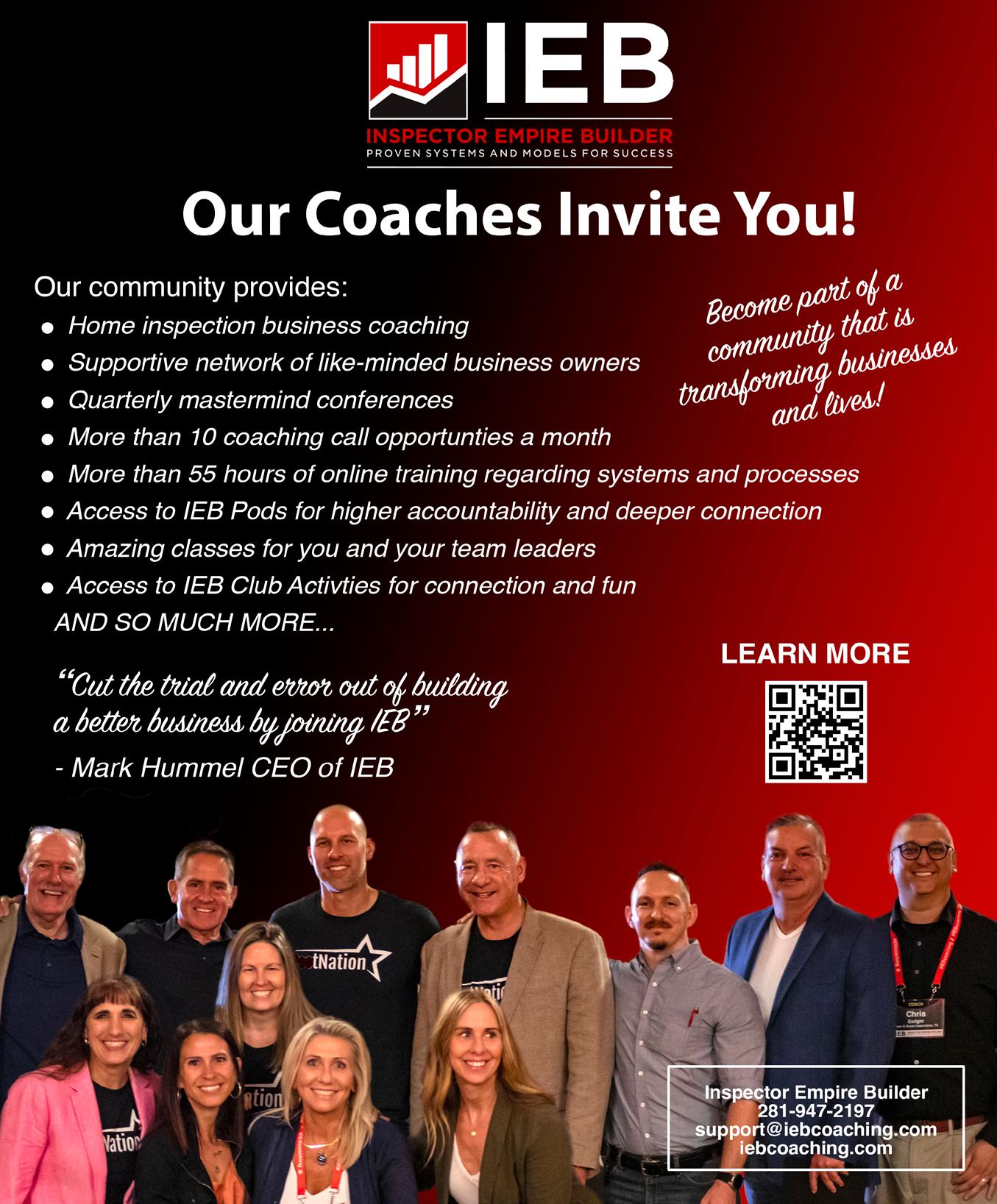
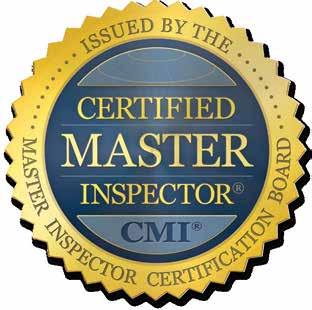































































SERVICE SUPERIOR
EDITORIAL DIRECTOR
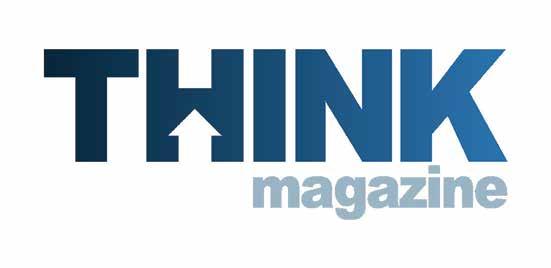
VANESSA C. GUZMAN
CREATIVE DIRECTOR
ALEX I. GERSON
CONTRIBUTING WRITERS
Nick Gromicko
Jerome Hurtado de Mendoza Greg Johns
Aaliyah Pasols
Aaron Shishilla
Kate Tarasenko
RESEARCH
Nestor Mann Editorial Research
Stuart Mills Project Manager
PHOTOGRAPHY / VISUALS
James Acquaroli Photographer
Nelson Randall Senior Photo Editor
WEB
Amber Rose Website Development
Karlina Watson Digital Production Manager
Sharon Saban Production Coordinator
SOCIAL MEDIA

Carolina G. Garcia Social Media Manager
ADVERTISING AND MARKETING
Ben Fontan Marketing Director
BUSINESS
Matthew Adams Chief Financial Officer
Leah Castello Vice President of Operations
Lisa Verdeza Controller
Susannah Sookoo Administrative Assistant
TECHNOLOGY
Philip J. Augustyne Director of Technology
PRODUCTION
Naomi Callaghan Special Events Manager
Ernie Clair Production Assistant
DISTRIBUTION & CIRCULATION
Daniel Marr Distributing Manager
Jose Avrett Circulation Manager
©2023 THINK Magazine. All contents are protected by copyright and may not be reproduced without written consent from the publisher. The advertiser is solely responsible for ad content and holds publisher harmless from any errors and/or any trademark or copyright infringement.
THINKMAGAZINE.US


Contents 24 ENVIRONMENTAL ACID RAIN FEATURES DEPARTMENTS 16 IN THE DETAILS: GMC CANYON AT4X 18 TOOLS: THE TOOL KIT 20 IN THE FIELD: OUR INDUSTRY NEEDS MORE PGC 22 HOME IMPROVEMENT: ADVANTAGES OF SOLAR ENERGY 26 HI-TECH: SMART COFFEE 28 INSPECTIONS: HELPFUL TIPS ON BARN INSPECTIONS 42 SIPS: JULIO CALIENTE 44 HEALTH: HERBAL TEA FOR THE SOUL 46 TOOLS: TOOL WATCHES 50 EVENTS: 2023 TEXAS INSPECTORS CONVENTION 52 Q&A WITH NICK GROMICKO 32 SPOTLIGHT AARON SHISHILLA 38 ESCAPES ALASKA











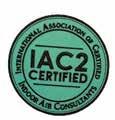
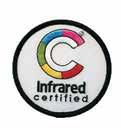


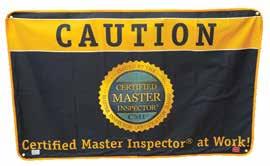

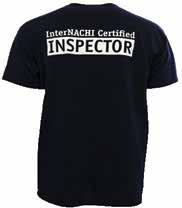
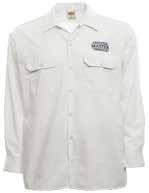




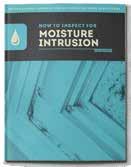
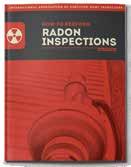




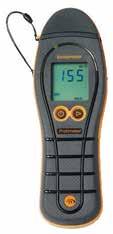

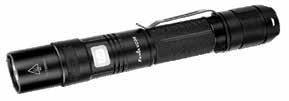




2023 GMC CANYON AT4X EDITION 1
THE MOST ADVANCED OFF-ROAD MIDSIZE TRUCK

: IN THE DETAILS
16
THINKMAGAZINE.US
The 2023 GMC Canyon features an all-new look, emphasized by its bold stance, aggressive exterior styling and elevated interior. Each 2023 Canyon trim sits higher and wider than its previous generation, providing improved approach, departure and breakover angles. For this new generation of Canyon, the front air dam was removed for elevated approach angle while the front axle was moved forward for improved proportions and a more planted, level stance. A simplified short bed, crew cab configuration comes standard across the 2023 Canyon lineup.
The 2023 Canyon’s exterior is pronounced by its high clearance, trimmed corners and the allnew integration of sheet metal for a completely unique look. The front fascia features full LED exterior lighting, relocated fog lights and daytime running lights. The 2023 model year also introduces an available sunroof — a first for the midsize truck.
Under the vehicle, the Canyon AT4X includes a large front heavy-duty AT4X skid plate, a transfer case shield and rocker protectors to tackle the most rugged terrains. The 2023 Canyon also introduces a water-tight tailgate storage system for increased bed functionality.



On its interior, the 2023 Canyon delivers premium appointments and intentional design executions to evoke premium craftmanship and precision. Across the lineup, no one interior is the same. Each Canyon trim is designed with its own unique identity. The Canyon Denali trim is outfitted with laser etched wood décor and leather appointments, while Canyon AT4X boasts the signature, trim-exclusive, Obsidian Rush interior with Ceramic White accents.
The 2023 Canyon is set to begin initial production in early 2023 with AT4X in spring 2023. GMC.com

THINKMAGAZINE.US 17
THE TOOL KIT
A) Supreme Mac Tools T5025P Tech Series supremenewyork.com

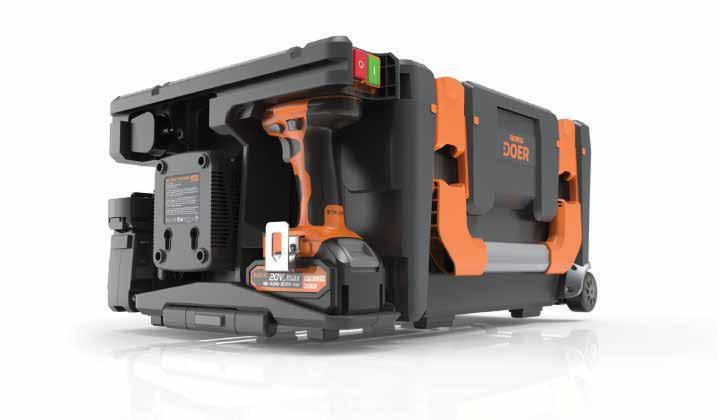
B) Milwaukee PACKOUT 3-Drawer Tool Box tools.com
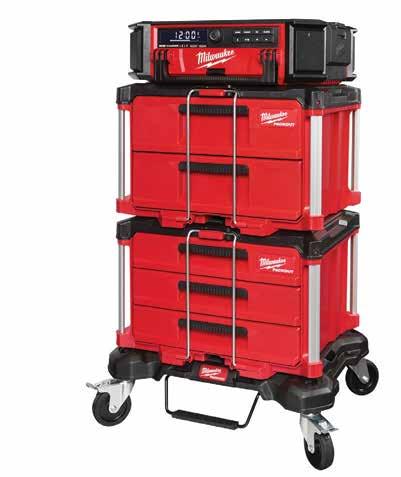
C) Husky Pro Tool Tote with Removable Tool Wall homedepot.com
D) Stellen Doer Multi-function Toolbox with 12 functions stellendoer.com
E) KingTool 325 Piece Home Repair Tool Kit amazon.com
F) Victorinox Swiss Tool X victorinox.com
G) Anyyion Heavy Duty Roll Up Tool Bag Organizer amazon.com
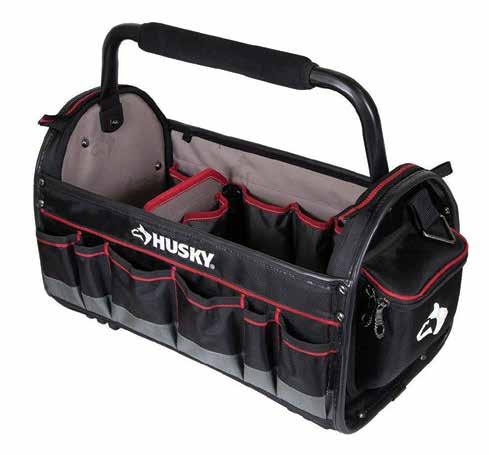
H) Wohn Geist Tools Luxury Cabinet swissmade.direct
I) Fanttik Mini Electric Screwdriver Set amazon.com
: TOOLS A
B C D 18 THINKMAGAZINE.US
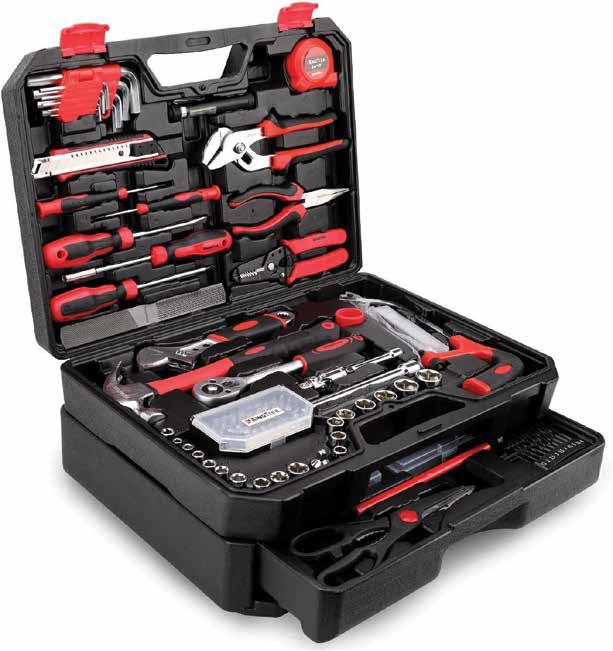



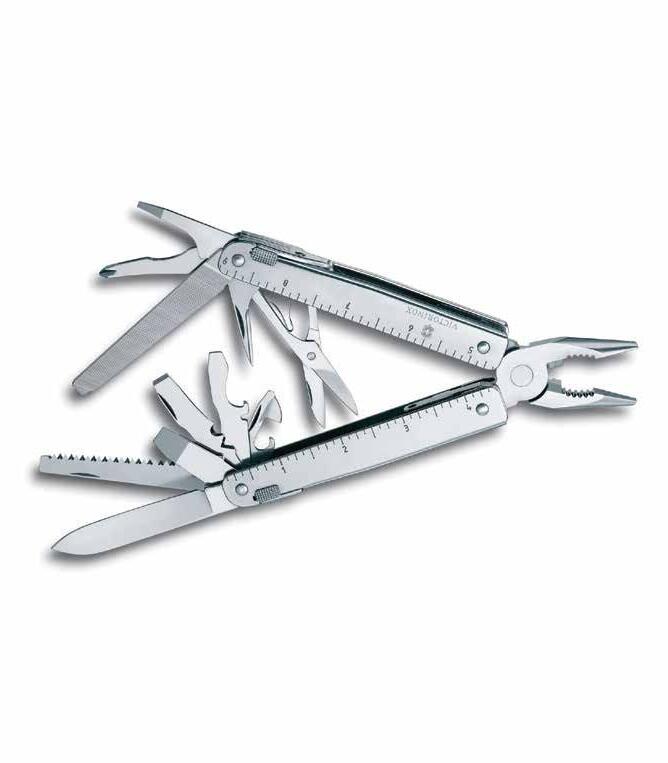
E F G H I THINKMAGAZINE.US 19
By Greg Johns Owner and Inspector cookeville.wini.com
OUR INDUSTRY NEEDS MORE PGC ( )
In a 2018 TED Talk, then political candidate Stacey Abrams used a phrase toward the end of her speech that has stuck with me as a professional within a service industry – People of Good Conscience (PGC). This is not a political piece, but I want to give credit for a phrase that was not originally mine, but that I am porting over to our inspection world.
Our home inspection industry is bedfellows with the real estate industry. In some states, like Texas, the real estate industry actually governs the home inspection industry. When I entered the realm of home inspecting more than a decade ago, one of the most important components to being “successful” as a business was to meet, greet, and befriend real


PEOPLE OF GOOD CONSCIENCE
estate professionals. These were the individuals from whom we were to receive our business. Ergo, any home inspector that wanted business had to find means of keeping real estate agents in their favor. If this doesn’t smack of questionable motivation yet, it should.
By and large, over the short arc of the home inspecting industry’s life, this was discernible by such phrases as, “Our reports don’t scare people,” and, “We only give our clients what they need to know.” And, for many years what they needed to know was just the facts (Dragnet, anyone?). As a matter of fact, the existing standards of practice for our two national associations and several state licensing entities, were based on just the facts — facts being items found to be deficient. Nothing else was needed.
Such limited information kept the reports simple, the clients less likely to cancel a transaction based on the home’s condition (by the way, the home inspection NEVER is the cause for a failed transaction, and the same is true for the home itself — at the right price, any home will sell), and the real estate agent(s) happy. Happy agents recommend you more because, like Pavlov, you are associated with good feelings and we humans will trend toward that which repeatedly makes us feel good.
Now what we are seeing is a transition in report writing software that trends less toward deficiency lists and more toward fuller documentation of the structure and its components. In my opinion – and this is an opinion piece, folks — one of the major

impetuses for this transition is liability. The legal industry, inclusive of in-house lawyers for E+O providers, has been very proactive in telling the home inspection industry what is needed in our reports to reduce our liability (elimination of said liability likely is not possible, especially in states like TN where inspectors are afforded very few protections). And, we as professionals have listened. Thirdparty report writing companies also have listened and continue to cater to the trends. Hence the growing field of report writing software that affords for stock and lengthy comments, oodles of pictures, and even video.
What this means is that our industry has evolved to a point where we can be People of Good Conscience and provide a better level of service to
: IN THE FIELD
20 THINKMAGAZINE.US
our clients. Deficiency lists are lame. True story. If you are buying a home for several hundred thousand dollars, a list of boxes and check marks that tells you little about the actual home is not very helpful or appreciated. Comprehensive, narrative reports that are more inclusive of all home components — deficient or not — are much more helpful and valuable to our clients and consumers.
Now, the looming issue is that with more information comes more opportunity for clients to decide against buying said home. And such is their right. Whether it is because they determine the deficiencies are too many or too great, or that the value of their money does not reflect the


purchase in question, or that what they thought the home was actually turned out to be more complicated (we as homeowners really don’t know much, but that’s another editorial). All of these are legitimate reasons for consumers to look elsewhere. All of these are exactly why we should be inspecting and furnishing comprehensive reports. We are consumer protection, folks.
Seemingly unbeknownst to many a real estate agent, a consumer’s due diligence within the confines of a real estate contract does not mean the transaction must go through. Part of the transactional proceedings is the implicit right to terminate based on information gained during due diligence. Who else in this process of
home purchasing is better positioned to arm the consumer with information that can afford them to make educated decisions for themselves? We as home inspectors don’t make thousands of dollars on any home sale/contract, so the transaction’s success has no place in our business model. We make a modest industry average price (usually less than a real estate appraisal) that is further scalped away by insurance, operating costs, and possibly franchise fees if you are a franchise -- our motivations are exclusively that of our clients’ needs.
People of Good Conscience could be an industry moto. But it would require a deeper separation from real estate and real estate agents. Such separation places our businesses
in jeopardy as many rely on those relationships, and some even gain business by pitting themselves against already operating PGC inspectors. Again, people love the path of least resistance and real estate agents have a lot of sway and power in our industry. Our industry needs more PGC. We need less pandering for business and more consumer protection. Such protection comes from more comprehensive reports vs deficiencylist reports and from willful choice in acting as a layer of consumer protection. To get here, our industry needs to continue to evolve past the teat of the real estate agent. We need to evolve into an industry of people of good conscience.
THINKMAGAZINE.US 21
ADVANTAGES OF SOLAR ENERGY
By Nick Gromicko, CMI®
Solar energy offers considerable advantages over conventional energy systems by nullifying flaws in those systems long considered to be unchangeable. Solar power for home energy production has its flaws, too, which are outlined in another article, but they’re dwarfed by the advantages listed below.

The following are advantages of solar energy :
Raw materials are renewable and unlimited. The amount of available solar energy is staggering — roughly 10,000 times that currently required by humans — and it’s constantly replaced. A mere 0.02% of incoming sunlight, if captured correctly, would be sufficient to replace every other fuel source currently used.
Granted, the Earth does need much of this solar energy to drive its weather, so let’s
look only at the unused portion of sunlight that is reflected back into space, known as the albedo. Earth’s average albedo is around 30%, meaning that roughly 52 petawatts of energy is reflected by the Earth and lost into space every year. Compare this number with global energy-consumption statistics. Annually, the energy lost to space is the combined equivalent of 400 hurricanes, one million Hoover Dams, Great Britain’s energy requirement for 250,000 years, worldwide oil, gas, and coal production for 387 years, 75 million cars, and 50 million 747s running perpetually for one year (not to mention one million fictional DeLorean time machines).
Solar power is low-emission. Solar panels produce no pollution, although they impose environmental costs through manufacture and construction. These environmental tolls are negligible, however, when compared with the damage inflicted by conventional energy sources: the burning of fossil fuels releases roughly 21.3 billion metric tons of carbon
dioxide into the atmosphere annually. Solar power is suitable for remote areas that are not connected to energy grids. It may come as a surprise to citydwellers but, according to Home Power Magazine, as of 2006, 180,000 houses in the United States were off-grid, and that figure is likely considerably higher today. California, Colorado, Maine, Oregon, Vermont, and Washington have long been refuges for such energy rebels, though people live off the grid in every state. While many of these people shun the grid on principle, owing to politics and environmental concerns, few of the world’s 1.8 billion off-the-gridders have any choice in the matter. Solar energy can drastically improve the quality of life for millions of people who live in the dark, especially in places such as Sub-Saharan Africa, where as many as 90% of the rural population lacks access to electricity. People in these areas must rely on fuel-based lighting, which inflicts significant social and
: HOME IMPROVEMENT 22 THINKMAGAZINE.US
environmental costs, from jeopardized health through contamination in indoor air, to limited overall productivity.
Solar power provides green jobs. Production of solar panels for domestic use is becoming a growing source of employment in research, manufacture, sales, and installation. They contain no moving parts and thus produce no noise. Wind turbines, by contrast, require noisy gearboxes and blades. In the long run, solar power is economical. Solar panels and installation involve high initial expenses, but this cost is soon offset by savings on energy bills. Eventually, they may even produce a profit on their use. It also takes advantage of net metering, which is the practice of crediting homeowners for electricity they produce and return to the power grid. As part of the Energy Policy Act of 2005, public electric utilities are required to make available, upon
request, net metering to their customers. This practice offers an advantage for homeowners who use solar panels (or wind turbines or fuel cells) that may, at times, produce more energy than their homes require. If net metering is not an option, excess energy may be stored in batteries.


Solar power can mean government tax credits. U.S. federal subsidies credit up to 30% of system costs, and each state offers its own incentives. California, blessed with abundant sunshine and plagued by high electric rates and an over-taxed grid, was the first state to offer generous renewable-energy incentives for homes and businesses. Solar power is reliable. Many homeowners favor solar energy because it is virtually immune to potential failings of utility companies, mainly in the form of political or economic turmoil, terrorism, natural disasters, or brownouts due to overuse.
The Northeast Blackout of 2003 unplugged 55 million people across two countries, while rolling blackouts are a part of regular life in some South Asian countries, and occasionally in California and Texas.
Solar power conserves foreign energy expenditures. In many countries, a large percentage of earnings is used to pay for imported oil for power generation. The United States alone spends $13 million per hour on oil, much of which comes from Persian Gulf nations. As oil supplies dwindle and prices rise in this politically unstable region, these problems continue to catalyze the expansion of solar power and other alternative-energy systems. In summary, solar energy offers advantages to conventional fossil fuels and other renewable energy systems.
THINKMAGAZINE.US 23
ACID RAIN AND INSPECTORS: BUILDINGS AT RISK
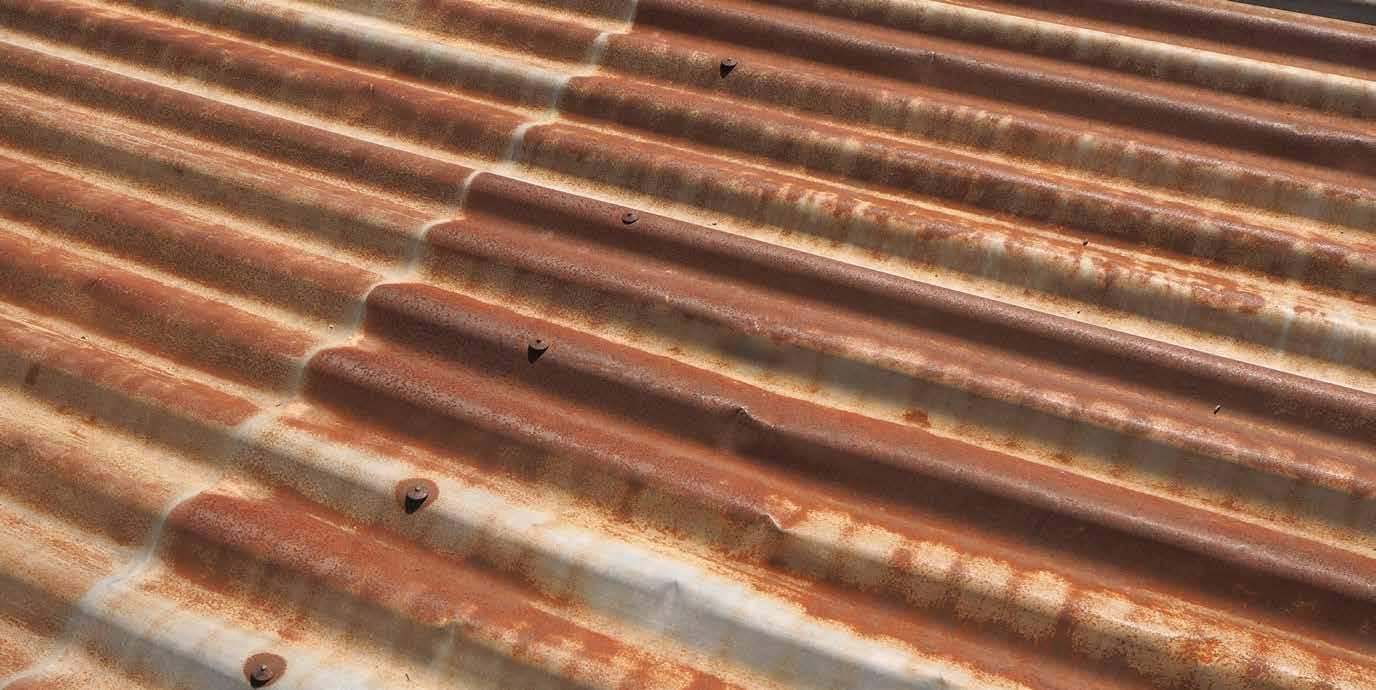 By Nick Gromicko, CM and Kate Tarasenko
By Nick Gromicko, CM and Kate Tarasenko
Acid rain, like “global warming,” is a phenomenon whose very existence is disputed by some. In fact, evidence of acid rain has been observed in industrialized cities around the world since the mid-1800s. “Acid rain” describes the mixture of wet and dry deposits from the atmosphere which contain high amounts of nitric and sulfuric acids that result from both natural and man-made emissions. Its effects on structures and homes are very real. Inspectors can learn more about acid rain and its destructive signs on metal and stone components of the exteriors of homes.
Acid rain is formed when the chemical precursors of nitric and sulfuric acids — sulfur dioxide (SO2) and nitrogen oxide (NOx), respectively — combine with natural sources of acidic particles, such as volcanoes and decaying vegetation. When this mixture reacts with oxygen, water and other chemicals
(including pollutants such as carbon dioxide), the result is acid rain, which can be carried by rain, and even snow, frost, fog and mist, which, in turn, runs off into soil and groundwater. According to the EPA, about two-thirds of all SO2 and one-quarter of the NOx emissions in the atmosphere in the U.S. result from power plants that burn fossil fuels (primarily coal), as well as vehicles and agricultural equipment that rely on gasoline.
It is fair to say that any industrialized region with power plants that burn fossil fuels will show some wear on its surrounding structures from acid rain. But buildings in arid regions are at greater risk because of dry deposition, in which acidic pollutants are present in gases, smoke and dust, which tend to stick to buildings, cars and other structures. When it rains or snows, the subsequent wet deposition of nitric and sulfuric acids becomes even more acidic, which then washes into the soil and aquifers.
The more obvious impacts of acid rain can
be seen on particular types of stone, such as limestone and marble buildings, monuments, statues, and headstones. The weathering pits and canyons can obliterate the lettering and features of such structures to a brutal degree, depending on the type of stone and other environmental conditions.
Acid rain can also corrode bronze and other metals, such as nickel, zinc, copper, and carbon-steel, as evidenced by streaks and discoloration on bridges and other metal structures, such as many commercial buildings. Not all buildings or structures suffer the effects of acid rain. How big of a threat it is can be determined by the chemical makeup and interactions of a building’s materials. Limestone and marble, which, historically, were used widely because of their availability and workability by artisans, are especially susceptible because they are composed of calcite, or calcium carbonate, which acidic chemicals can dissolve easily. To observe this first-hand, drop a piece of blackboard chalk

: ENVIRONMENTAL 24 THINKMAGAZINE.US
into a glass of vinegar. Drop another piece of chalk into a glass of water. The next morning, you’ll see the alarming difference.
Modern buildings tend to use granite, which is composed of silicate minerals, such as quartz and feldspar. Silicate minerals resist acidic attacks from the atmosphere. Sandstone, another silica material, is also resistant.
Stainless steel and aluminum tend to hold up better. But all minerals, including those found in paint and road overlay, are affected, to some degree.


Because of the switchover in the use of certain building materials in the post-Industrial era, historic buildings, more so than modern ones, tend to show the destructive outcome of acid rain since we first began burning fossil fuels for energy. London’s Westminster Abbey, the Colosseum in Rome, and India’s Taj Mahal all show signs of degradation brought on by atmospheric nitric and sulfuric acids.
Plant life and wildlife are also affected. The pH — or alkalinity and acidity — of lake water, for example, tends to re-stabilize and maintain equilibrium when contaminated by acid rain. However, soil and trees can become irreparably harmed when their pH is disturbed to the extent that their natural abilities to compensate for chemical fluctuations in the environment are thwarted. Soil contains naturally occurring mercury and aluminum, which are normally poisonous for plant life.
But plants can survive when the nutrient base of the soil remains healthy, giving them a strong buffering capacity. Acid rain, however, destroys the environmental balance, and these naturally occurring chemical threats suddenly become fatal. The plants’ “immune systems,” made stronger by the surrounding soil, become compromised. The plants and trees may die a slow death due to nutrient starvation, oxygen deprivation, injured leaves that cannot recover, and/or their bark will become damaged and vulnerable to mold, fungi and wood-destroying insects.
When the environment is under continual attack by the deadly effects of acid rain, the odds of survival for other resident plant, animal and insect species diminish as the ecosystem is thrown out of its natural balance. On the flipside, NASA researchers recently discovered that one species of swampland bacteria’s ability to produce methane — a greenhouse gas that contributes to global warming — is actually inhibited by acid rain.
The EPA’s Acid Rain Program got underway in 1995 (after being enacted by Congress in 1990), which continues to seek to reduce SO2 and NOx emissions to below 1980 pollution levels. The program originally targeted coal-burning electricity plants and has expanded to include other types of industry that burn coal, oil and gas, too. While the EPA touts some success in bringing down
some polluters’ output by 40%, critics charge that because the program permits emission “allowance trading” among its participants, the larger industrial polluters simply pay the $2,000-per-ton fine for exceeding SO2 and NOx limits. The EPA, however, has embraced a market-friendly approach while shooting for overall target reductions.
The primary problem with acid rain, of course, is that there is no way to contain it. It blows with the wind and is captured and carried by localized weather systems. Although the deterioration which acid rain causes may be slow, it is persistent. And until we shift our reliance on fossil fuels by using various types of green energy (wind, solar, etc.), we will continue to witness the destructive consequences in all aspects of our environment, both natural and man-made, for decades to come.
Homeowners can mitigate the environmental effects of acid rain by modifying their purchasing and traveling habits, and by using building materials that are better able to withstand the corrosive effects of this modern scourge. Inspectors can become more familiar with the problems posed by acid rain by investigating the types of building materials used, and by contacting their local EPA representative for up-to-date statistics on pollution levels for their specific area.
THINKMAGAZINE.US 25
NESCAFÉ® Smart Coffee Maker and Travel Mug Bluetooth Connectivity nescafe.com

S8 Automatic Coffee Machine with Touchscreen surlatable.com
Smart Refrigerator with Built-In Keurig geappliances.com
SMART COFFEE
This month, we are featuring intelligent coffee makers that will brew up your cup of morning java from the touch of your smart phone, so you can wake up with your favorite intoxicating aroma! Just imagine waking up to your own personalized cup of coffee from a variety of selections that your coffee maker may offer such as espresso or cappuccino. Some even have the capability for you to program your preference of temperature and the amount of froth!
By VANESSA C. GUZMAN
SPINN Original Plus Smart Coffee Maker plus it Orders Coffee Beans spinn.com
TERRA KAFFE TK-01 Espresso Machine saksfifthavenue.com
CAFÉ Specialty Drip Coffee Maker 10-Cup Glass Carafe with Wi-Fi Enabled Voiceto-Brew Technology
BEHMOR 8-Cup Coffee Maker You Can Control from Your Phone behmor.com

MELITTA BARISTA TS Smart Coffee Machine amazon.co.uk





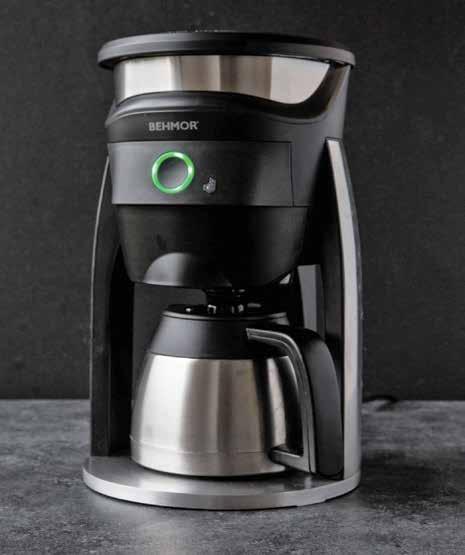
: HI-TECH
GE CAFÉ
JURA
É BY
26 THINKMAGAZINE.US

HELPFUL TIPS ON BARN INSPECTIONS
By NICK GROMICKO, CMI® AND KATE TARASENKO
Abarn is an agricultural building, typically located on a ranch or farm (or former ranch or farm), and used for a variety of purposes, including: the storage of farming vehicles, equipment and supplies; housing livestock; storing hay and other livestock food supplies; and as a covered work area.
1. Inspectors who work in rural areas may be asked to inspect a barn, but, before they do, they should consider the following two questions:
2. Is the barn in a northern climate where it snows? In snowy climates, long, unsupported spans and a lack of interior structural support
can make barn roofs vulnerable to collapse. Melted snow can also cause ice dams and structural issues related to moisture intrusion, as well as mold growth.
In a property sale, are the buyers going to use the barn for the same purpose as the sellers or current occupants? It’s not uncommon for clients to purchase a property for its pastoral and rustic setting because it includes a barn but then not use the structure for its original purpose of housing animals. The buyer may be unaware that the barn was protected from freeze-thaw cycles by the body heat provided by the animals that the barn may have formerly housed, and
the absence of animals and the natural warming they provided can lead to foundation and structural problems brought on by cold weather. If a barn is to be converted from a structure that houses livestock to living space for the family, homeowners can expect to make certain modifications beyond those meant merely for aesthetics and convenience.
PPE
While inspecting barns, inspectors should wear the appropriate personal protection equipment (PPE), including boots, gloves, and respirators, especially if the structures are older or poorly

ventilated. Some inspectors are surprised by how dirty barn air can be, reporting that one can almost taste ammonia or dust in the air. This may be the result of lingering animal waste, a failure to properly clean and maintain the interior of the structure, and/or a failure to make repairs to the structure itself.
Hazards to Look For
In and around the barn, inspectors can look for the following issues: kick damage from horses or livestock; manure piles deposited too close to the exterior of the barn; excessive dust. Primarily originating from hay, dust can irritate the eyes
: INSPECTIONS
28 THINKMAGAZINE.US
and respiratory systems of both humans and livestock; exposed nails, sharp edges, and splinters; nonGFCI protected lights and electrical receptacles; extension cords. An older barn may not have an updated electrical system, including a lack of receptacles or outlets. Extension cords may overload the system and can also pose a tripping hazard; exposed electrical wires that may be reached by inquisitive animals or children; a lack of ventilation or shade in the livestock pens, which can cause animals to overheat; insufficient room at the feed rack for animals to eat; farm implements, such as ladders and hand tools, and farm machinery stored too near animals or in the path of people; and fire hazards that are particular to outbuildings and farm structures.
Barns contain both natural and man-made flammables. For this reason, barn fires can be devastating and get out of control in a few seconds, especially if the property is located far away from first responders.

Some of these fire hazards include: excessive cobwebs on ceilings and walls, especially near light or heat sources; hay stored near sources of light or heat; plastic and chemical items that can potentially lead to a
fire, if not stored properly. Such items include plastic water buckets, nylon hay bags, nylon saddlebags, plastic stall signs, and chemical flammables, such as weed killers and insecticides; no lightning rod. Barns are often built in fields away from trees and other structures, making them prone to lightning strikes and subsequent fires; no fire extinguishers; and an unmaintained or unmowed field around the barn.
Recommendations for Owners
Inspectors can recommend that owners exercise the following precautions to ensure a safe barn area for both people and animals: Loose tools and implements can cause injury, so they should be secured or stored out of the way of pens and footpaths. Feed bags and buckets should be emptied and stowed to prevent injury and to avoid creating an easily accessible food source for rodents and other unwelcome pests, which are natural inhabitants on farms anyway. The same goes for water and food bowls for cats and dogs on the farm. Water hoses should be drained, coiled, and hung. Exposed splinters and nails should be removed or hammered in, and sharp edges should be sanded smooth, with
broken boards replaced. Electrical wires should run through conduits and not be in plain sight. Gasoline, oil, and other chemicals should be stored in appropriate sealed containers and out of the feed and animal areas to prevent accidental poisoning or contamination. ABC-type fire extinguishers, which can put out wood, fire and hazardous chemical fires, should be placed every 75 feet, according to the University of New Hampshire’s Cooperative Extension. Hay is extremely flammable and should be stored in a separate building, if possible. Hay should be dried before storage, as wet hay produces heat and can spontaneously combust. Light sources should be covered with a protective covering. Jelly-jar fixtures are a common installation in barns. Doors should be self-latching to prevent the escape of barned animals and the entry of intruders. Portable electric heat sources should be turned off and unplugged before leaving the barn, as well as away from any potential fuel. Wood stoves should be properly ventilated, with their fuel kept in a safe container and at a safe distance to prevent accidental ignition. Skylights and windows should be checked for moisture intrusion and
signs of mold growth. Whitewashing the interior brick or cement walls every year or so can decrease the incidence of moisture intrusion and mold growth. Animal waste should be evacuated from the interior at least daily. Conveyor belts used for feeding or for removing waste should be checked regularly to ensure that they are free of oil and dust buildup, which can lead to accidental fire as well as malfunction. Dry, tall grass can act as kindling, so a moderate defensible space around outbuildings should be maintained. If firewood is used in the home, it should be stored a safe distance from any outbuildings to prevent pest infestation and fire hazards. Jute mats should be placed at the barn’s entrances to wipe off boots before entering the barn to keep its floors as dry and clean as possible to prevent slip hazards. Barns should be mucked out and swept daily, and more often during times of increased activity, not only to keep floors free of slip hazards but also to keep unwanted pests and odors in check. In summary, barns should be maintained properly by their owners as well as inspected for mechanical, electrical and fire hazards by a qualified inspector.
THINKMAGAZINE.US 29
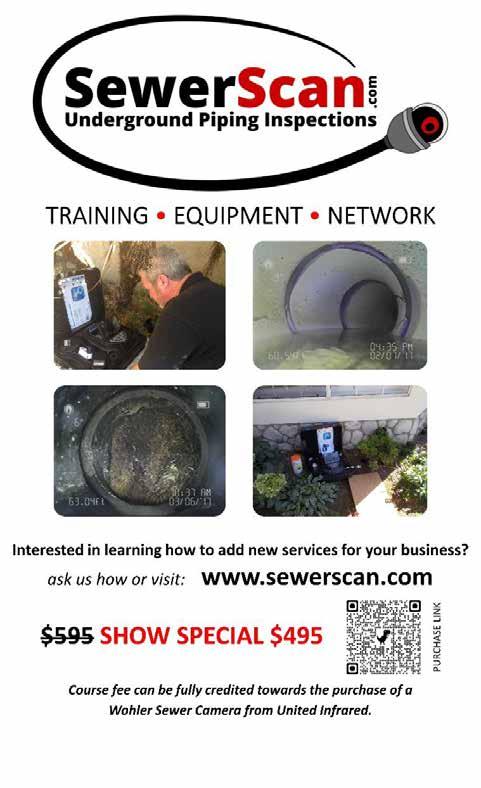



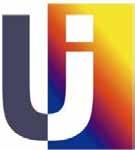




WWW.UNITEDINFRARED.COM 888-722-6447

AARON SHISHILLA
WolfPack Advising Becomes an Industry Influence
The aspiring Aaron Shishilla is only 25 years old, yet he has had a profound impact on the home inspection industry. At 18 years old, Aaron was employed by his parents at their home inspection company. At the age of 25, Aaron is the CEO of a growing digital marketing agency for home inspectors who are looking to scale their operations. If there's one thing for sure, Aaron has a vision for the home inspection industry and just might be able to pull it off.
Early Beginnings
In 2008, at only 12 years old, Aaron remembered John Shishilla was getting started in wind mitigation inspections as working previously as a residential contractor, but that was just the beginning. After Aaron finished high school, he attended the University of Central Florida to study Integrated Business. While in college, Aaron worked as a home inspector for his parents’ company, Honor Services. He graduated as the winner of the Integrated Business competition, a competition based on pitching a business plan to professionals. It
was during his time in college Aaron started building websites for fun. While at the same time, Aaron was beginning to like his job as a home inspector. Many home buyers and real estate agents gave a nervous look when they saw a 19-year-old pulling up as their home inspector, however, it was quite obvious Aaron knew the job well when he began talking about the home. After a few years, Aaron had worked in the Honor Services' office. He had scheduled inspections, worked in the field, and wanted to take on a larger role in helping the company grow. At about 21 years old, Aaron was sent by Michelle to visit Austin Hintze in Tampa, FL. Austin is the son of Bob Hintze, the owner of a multi-inspector firm named Waypoint Property Inspection (Waypoint). While visiting Tampa, FL, Aaron not only learned a lot about current home inspection marketing practices, but he also became good friends with Austin. Aaron took back his knowledge of common home inspector marketing practices to Honor Services after his visit.
Starting WolfPack Advising
It was also during this time that Honor Services
: SPOTLIGHT
32 THINKMAGAZINE.US

struggled with their recently hired digital marketing agency. The SEO company lacked communication and it was unclear on how their services were affecting their website traffic. Realizing this, Michelle and John suggested Aaron undertake the responsibility of managing Honor Services’ online presence from website management and SEO to their email marketing and social media profiles. Digital marketing came naturally to Aaron as he had studied marketing in college and had built websites previously. This new responsibility inspired Aaron to take his education more seriously and invested in reading everything he could get his hands on about marketing. Aaron, Austin, and Michelle opened a company called WolfPack Advising to help other businesses with their online presence.
While it started with a few websites, it quickly expanded as other inspection companies realized how effective online marketing could be for their business. Especially when performed by a company who specifically understands the content and needs of home inspection
professionals.
In a few months, Aaron had visited Waypoint, helped Honor Services grow their online presence and began to have talks with Waypoint to join their team as marketing manager. Honor Services did not really have a marketing team at the time, and while Aaron did focus on online presence, he was still completing home inspections. Moreover, the Waypoint opportunity opened the door to gain additional experience.
Expanding Waypoint's Digital Marketing
In the fall of 2019, Aaron was hired by Waypoint Inspection as marketing manager. While he had left his position at Honor Services as a home inspector, he moved to Tampa to continue his journey in marketing.
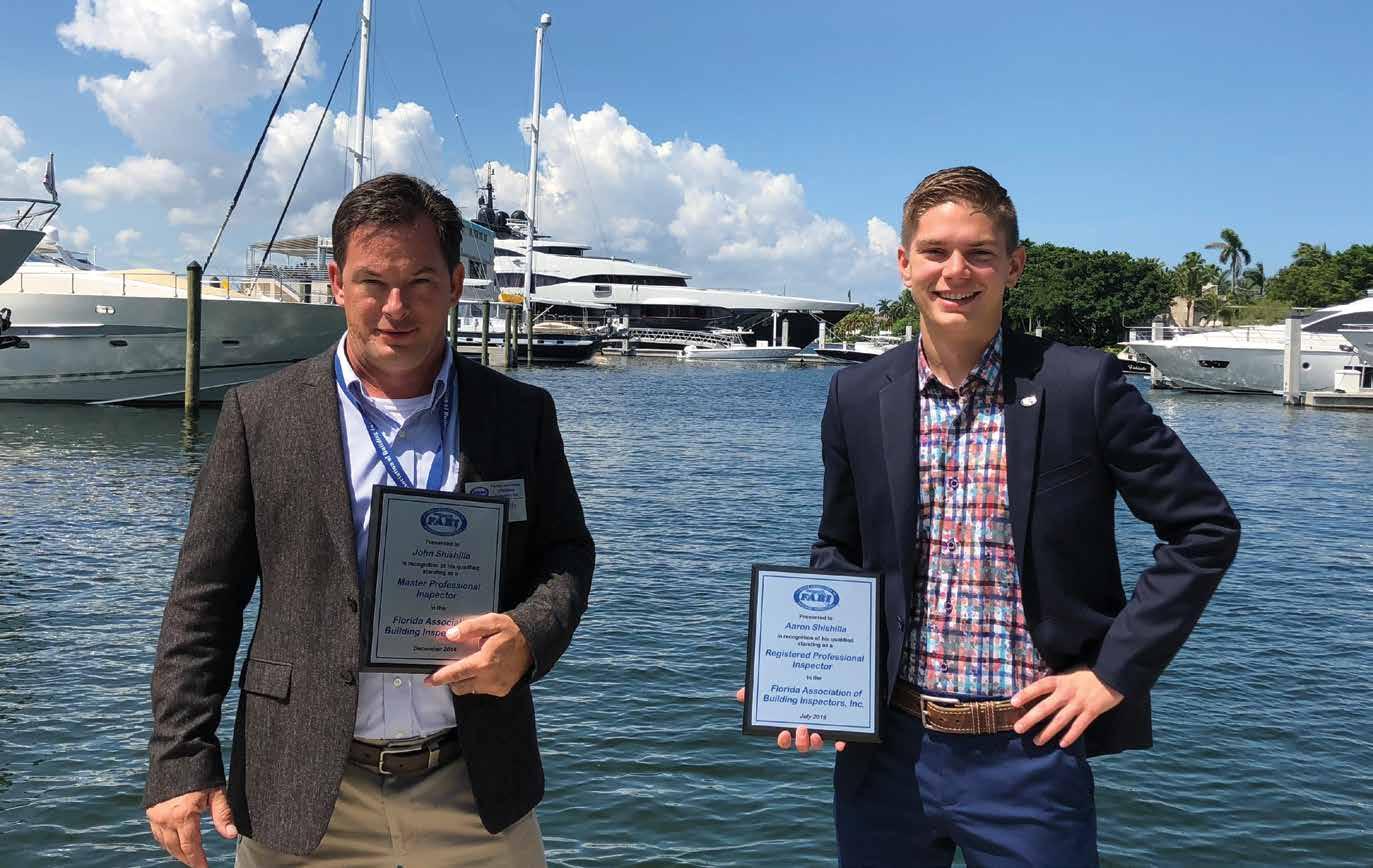

For the first three months, Aaron was visiting offices, speaking to real estate agents, and completing the traditional marketing format taught by other marketing professionals in the home inspection industry.
During that time, Aaron and Austin worked
hard to calculate the return on investment through those strategies. As it turned out, those 3 months showed no return and zero inspections. Aaron had thought diversifying their marketing strategies to digital could have a better return.
They turned their focus to online marketing strategies such as pay per click advertising through Google Ads, search engine optimization, and social media marketing. After just a month, their strategies were proving fruitful through their strategic tracking. On top of that, COVID-19 took hold in the United States. The better part as well was that rather than relying on training incoming marketing staff to visit real estate offices and networking events, digital marketing was easily scalable. So, once a concept was proven to work for Waypoint, Waypoint would scale their marketing budgets to draw in more business.
It had been perfect timing where Waypoint was setup for success in a new world where digital marketing mattered more than in-person networking and office presentations. While
: SPOTLIGHT 34 THINKMAGAZINE.US
other companies scrambled during COVID-19, Waypoint was able to push the gas pedal on their digital marketing activities.
Waypoint had gone through a rebrand, expanded their commercial division, and almost doubled in a few years while Aaron was onboard as marketing manager. All while, lowering the cost of real estate office sponsorships, and finding ways to easily scale their marketing.
During the time Aaron was working as marketing manager at Waypoint, WolfPack Advising was gaining more traction. You see, Austin and Aaron were constantly traveling to home inspection conferences, networking, and running their own digital marketing campaigns to grow WolfPack. WolfPack had gone from a handful of clients at the time to almost 100 separate inspection companies in 2021. WolfPack Advising was turning into a real career opportunity to help
home inspection companies with their digital marketing.
In the fall of 2021, Austin Hintze was promoted as Chief Executive Officer (CEO) of Waypoint. Austin needed to take a step away from WolfPack Advising to focus more attention on Waypoint Property, and Aaron realized someone had to focus on WolfPack Advising full-time. While Austin was promoted, Aaron took WolfPack Advising full-time and was self-employed by the age of 23.
WolfPack Advising Becomes an Industry Influence
Today, WolfPack Advising serves hundreds of home inspection companies and is actively growing into other home service industries including pest control and other home service industries.

Just recently, WolfPack Advising hosted their first-ever conference named, WolfPack Summit. WolfPack Summit is a new conference where home inspection and pest control companies can gather in one united conference.

WolfPack Summit was a hit, and received many compliments from home inspectors, exhibitors, and speakers. Joe Kelley, owner at Avalon Home Inspections, even shared,
The conference was fantastic!!! Thanks Aaron Shishilla, Austin Hintze (lots of people including the vendors) for all your hard work. Cannot wait till next Year. More Chocolate Ice Cream Next Year Please!!!!"
On top of that, WolfPack Summit hosted a famous book author and speaker, Joey Coleman, a #2 Wall Street Journal Best Selling Author. Joey
"WTG!!!
educated WolfPack Summit attendees on how to literally never lose a customer or referral partner, such as a real estate agent, again.

Taking WolfPack Advising full-time gave Aaron more time to focus on how to elevate the inspection industry. He strives to bring in higher level education to WolfPack Summit, constantly test and prove new digital marketing strategies, and advise businesses on how to scale their marketing the right way.
Aaron's Vision for Home Inspector Marketing
At just 18 years old, Aaron had no idea he would have an impact on the inspection industry that he does today. However, what he truly envisioned was a systematic and calculated way his parents could grow their businesses.
Aaron saw how frustrating it can be for a small business (like his parents’ business) to invest in digital marketing and see nothing in return. His vision was to change that, and he
wanted to find proven methods for scaling a home inspection business.
It is arguable that Aaron and the rest of the team at WolfPack Advising has already accomplished this vision by teaching others how they should market their business and how to calculate their return on investment from all different types of marketing and sales strategies. Moreover, WolfPack Advising clients can easily calculate their return from different marketing strategies and scale their budgets to grow their business.
In the future, Aaron envisions making a larger impact on the inspection industry through innovative services and products. Additionally, WolfPack Advising is looking to expand the knowledge of the home inspection industry by uniting the expertise from other industries such as pest control or HVAC.
The accomplishment of Aaron and WolfPack Advising, would not have happened though if it
were not for others. Michelle and John Shishilla at Honor Services gave Aaron the foundation and encouragement to grow in the home inspection industry. They are industry leaders and knew how Aaron could fill gaps the industry needed.
Austin Hintze, and the rest of the ownership team (Bob Hintze and Eddy Lai), gave Aaron a sandbox to play in so to speak with many of his strategies. While some failed, many were successes.
Lastly, WolfPack Advising customers, partners, and friends gave the support and feedback for the company to grow. In a world where nearly 50% of small businesses fail within the first five years, WolfPack is on track to reach five years in business in 2024, with no signs of stopping.
At the end of the day, Aaron and WolfPack Advising stand for one thing... that the power of uniting together is stronger and more meaningful than acting alone.
: SPOTLIGHT 36 THINKMAGAZINE.US



38 THINKMAGAZINE.US


THINKMAGAZINE.US 39




: ESCAPES
Matanuska Valley
Denali National Park Anchorage
40 THINKMAGAZINE.US
The Mendenhall Glacier and Ice Caves


 Northern Lights
Northern Lights
THINKMAGAZINE.US 41
Kodiak Island
Julio
Caliente
Try this spicy cocktail with fresh juice that will make your taste buds go wild!
INGREDIENTS:
• 1.5 fl. oz. Don Julio®

• 0.5 fl. oz. Aji Amarillio infused Aperol
• 1.5 fl. oz. Fresh watermelon juice
• 0.25 fl. oz. Lime juice
• 0.5 fl. oz. Watermelon syrup
: SIPS
42
Recipe courtesy of Juvia Mixologist Jerome Hurtado de Mendoza
THINKMAGAZINE.US
METHOD TO INFUSE THE APEROL:

First place the Aperol in a pot on low heat until it begins to bubble. Next, add the Aji Limo and remove it from the heat. Then, let mixture cool for about ten minutes and place it in a glass bottle to keep at room temperature until ready to use.
PREPARATION:
First, place glasses in the refrigerator for twenty minutes before serving. Then, add all ingredients into shaker and shake for 10 seconds. Pour the elixir into the cold glasses using a strainer. Afterwards, fill the remainder of the glass with crushed ice. Finally, garnish your cocktail with a slice of watermelon and enjoy!
THINKMAGAZINE.US 43
TEA HERBAL FOR THE SOUL
Herbal teas (also called tisanes) are infused with spices, herbs, and other plant materials. Unlike other types of tea, tisanes are not made with tea leaves. The health benefits of various herbal teas depend on their composition. Sometimes, this is just a single ingredient, while other times it is a combination of a few herbs and flowers. There are a lot of different types of herbal teas and botanicals from around the world —some have complex blends formulated for very specific health treatments. These are some of the most common ones from different continents.

: HEALTH
44 THINKMAGAZINE.US
ROSEHIP TEA

Rosehip tea is a delicious floral blend that has been used as a herbal remedy for centuries. This sweet and tangy tea offers a unique blend of flavors to entice taste buds. Rosehips are the fruit of the rose plant and are one of the best plant sources of vitamin C, which is important for the immune system, skin, and tissue health, as well as adrenal function. Consider reaching for rosehip tea next time you need a health boost.
LEMONGRASS
Lemongrass is a herb that is native to Sri Lanka and South India but now grows in many countries around the world. The plant has long leaves that are similar to those of seagrasses. While an estimated 55 species of lemongrass exist, only the East Indian and West Indian varieties are suitable for use in cooking. Lemongrass tea offers many anxiety-reducing properties and boosts red blood cell levels and even prevents infection.
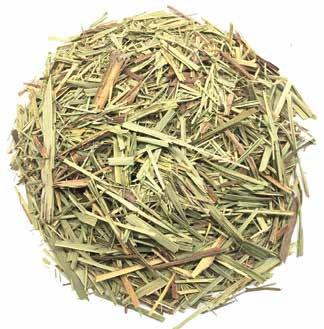
ROOIBOS TEA


High in vitamin C as well as other minerals, rooibos has all sorts of health benefits. An easy drinking tea, it’s largely grown in South Africa and has been touted for its antioxidant properties, which may in turn help ward off disease and signs of aging. It has also been shown to help with common skin concerns, such as eczema. Antioxidants are important for a healthy heart, which is why rooibos tea may provide cardiovascular benefits. It may also keep cholesterol levels in check.

WILD CHRYSANTHEMUM
Wild Chrysanthemum flowers are cultivated from the mountainous area of Wan Nan in southern An Hui province. It blossoms during winter, filling the air with the natural sweet fragrance of Chrysanthemum flowers. This tea is wellknown for its cooling properties that help to decrease body heat and is recommended for those with fever, sore throat, and other heat-related illnesses.

THINKMAGAZINE.US 45
QUINTESSENTIAL
TOOL
ARELIABLE TIMEPIECE ON YOUR WRIST SAYS A LOT ABOUT THE COMMITMENT TO YOUR CRAFT. TOOLS LIKE A CHRONOGRAPH, A TACHYMETER, A GMT FUNCTION, OR EVEN A BAROMETER CAN BE GREAT HELP IN THE FIELD, SPECIALLY IF USING YOUR PHONE IS OUT OF THE QUESTION.





: TOOLS
SEIKO 5 SPORTS GMT
G-SHOCK MUDMASTER
46 THINKMAGAZINE.US
HAMILTON X-WIND
WATCHES






 ORIENT MAKO II
VICTORINOX I.N.O.X.
CITIZEN PROMASTER SKYHAWK A-T
ORIENT MAKO II
VICTORINOX I.N.O.X.
CITIZEN PROMASTER SKYHAWK A-T
THINKMAGAZINE.US 47
GARMIN TACTIX® 7
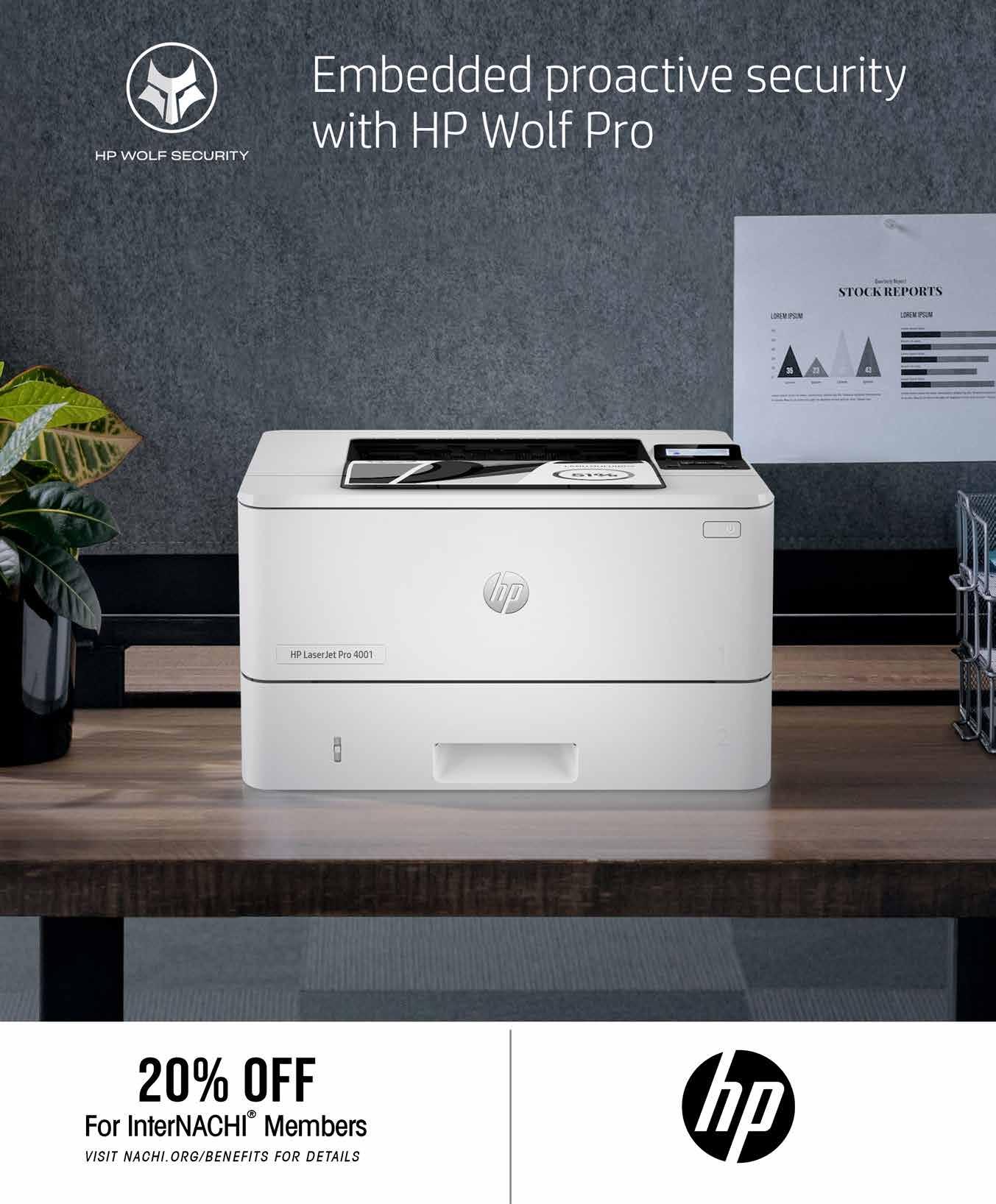

THINKMAGAZINE.US 49
2023 ANNUAL TEXAS INSPECTORS CONVENTION & EXPO
ATTENDEES ENJOYED THIS YEAR’S LIVE AND IN-PERSON CONVENTION, CLASSES, CAMARADERIE, VENDORS, AND, OF COURSE, THE FOOD. THEY PROVIDED THREE OUTSTANDING TRAINING PATHS THIS YEAR MAKING THIS YEAR’S SCHEDULE BIGGER AND BETTER THAN EVER.
Event goers joined the Texas Inspectors Convention & Expo for another fun-filled weekend, which was hosted by TPREIA-InterNACHI®, and held at the Brazos County Expo Center in Bryan, Texas, on January 19-21, 2023.





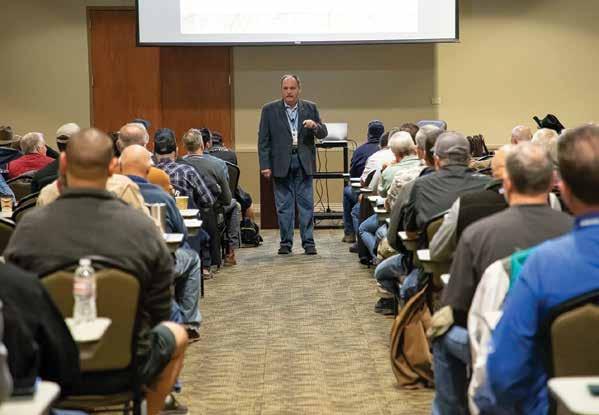
They offered two days of robust classes to help fulfill the continuing education requirements. Attendees also experienced meeting the best vendors in the inspection industry. During the convention, raffle prizes from InterNACHI®, Certified Master Inspector®, House of Horrors®, and PRO-LAB® were given out to lucky winners.
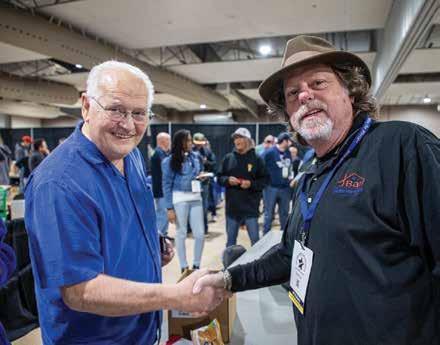
: EVENTS
50 THINKMAGAZINE.US
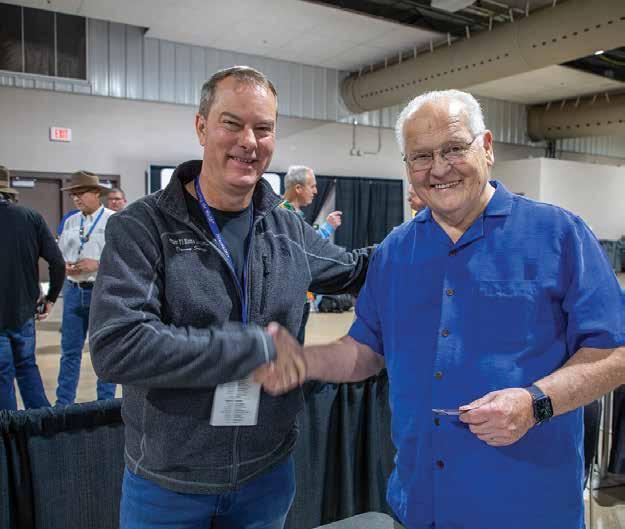

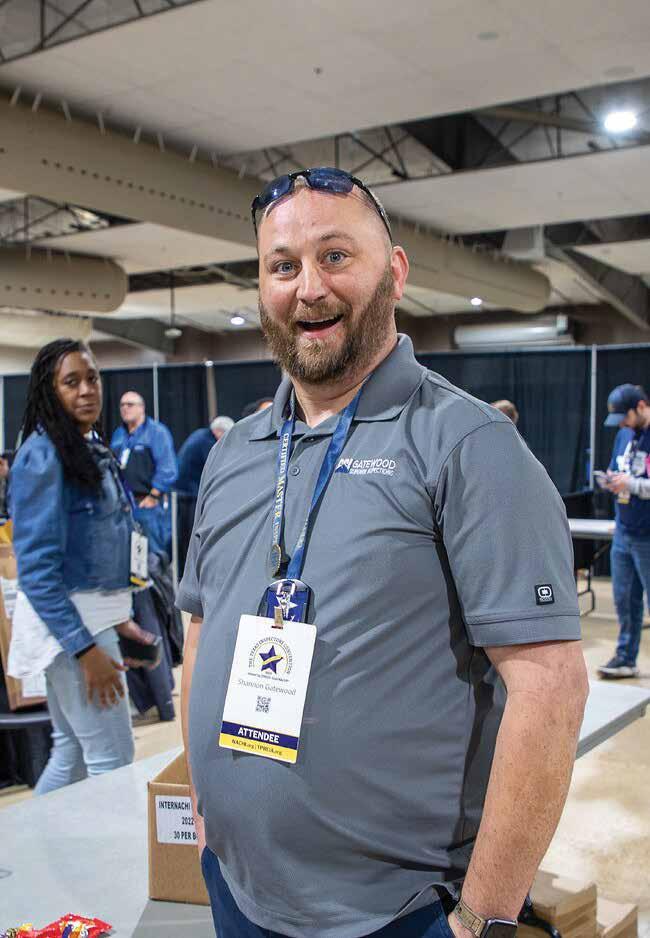
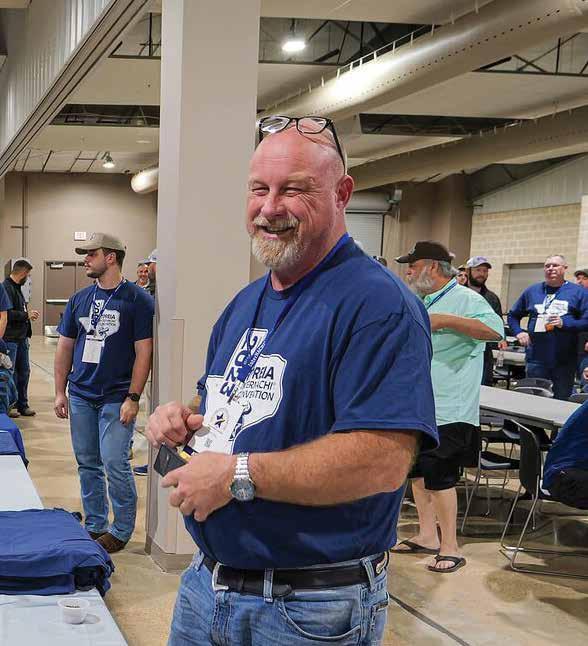

THINKMAGAZINE.US 51
DEAR NICK
NICK IS THE FOUNDER OF INTERNACHI®, THE INTERNATIONAL ASSOCIATION OF CERTIFIED HOME INSPECTORS, BASED IN BOULDER, COLORADO. INTERNACHI® IS THE WORLD’S LARGEST ASSOCIATION OF PROPERTY INSPECTORS — WITH ONE OF THE LARGEST WEBSITES ON THE INTERNET AT WWW.NACHI.ORG — OFFERING EDUCATION, TRAINING, BENEFITS AND SUPPORT TO ITS MEMBERS TO HELP THEM SUCCEED IN THE HOME INSPECTION INDUSTRY.
This month, we look at helping inspectors in a slow real estate market and ask InterNACHI Founder Nick Gromicko what inspectors should do on a day with no inspections.
Treat your inspection business like a real job. Every night, set your alarm clock, and when it rings in the morning, get up and go to work, even if you don’t have an inspection scheduled. But what can you do when you don’t have an inspection scheduled? Here are some things you can do to help your company and yourself.
1. Market. If you market your inspection business every day you don’t have an inspection to do, you’ll eventually have few days that aren’t booked. In this way, the inspection business is self-leveling: the slower you get, the more you market, so the busier you get.
2. Take an inspection course. Smart inspectors who are serious about their business will stay on top of their game by continually learning. Furthermore, the growing innovations in the building industry mean that there’s always something new for the inspector to know. Improving your technical competency also reduces your liability. InterNACHI® has hundreds of
free, online inspection courses that can be completed in a day.
3. Read. InterNACHI® has an enormous inspectionrelated article library. Inspector Outlet has dozens of downloadable inspection book. And InterNACHI’s forum also has 2.6 million posts to enjoy.
4. Add a new inspection service. Offering an additional ancillary inspection is a great way to increase your company’s revenue. InterNACHI’s House of Horrors® partner PRO-LAB® offers topnotch mold inspection courses. Get certified to offer mold inspections.
5. Clean, organize, and prepare. Wash your inspection vehicle and fuel it up. Organize your office. Answer emails. Charge the batteries for your tools.
6. Shop. Look into the many vendors in our industry and see what products and services they have to offer. Purchase new inspection equipment. Experiment with new reporting software.
7. Save. Compare insurance quotes. InterNACHI has 300,00 discounts in its Super Deals section. Need a new inspection vehicle? Check out the discount FORD
gives InterNACHI members. Whatever you and your family buy, InterNACHI® can likely save you money on it.
8. Explore business development options. Think about what you can do to grow your business. Go through the recommended reading in BizVelop.com. No, really. Go through the recommended reading sections and follow through with some.
9. Develop a totally new vertical market. I recommend commercial property inspections. Being a commercial inspector is the perfect “encore career” for many home inspectors, and you can operate your commercial inspection business long after physiology prevents you from performing home inspections. Don’t wait till then, though – get started today by joining CCPIA.
10. Rest. The inspection business takes its toll both physically and mentally... and sometimes even emotionally. Even God rested one day a week.
Questions: If you have a question for Nick Gromicko on or about home inspections, please email us at editorial@thinkmagazine.us.
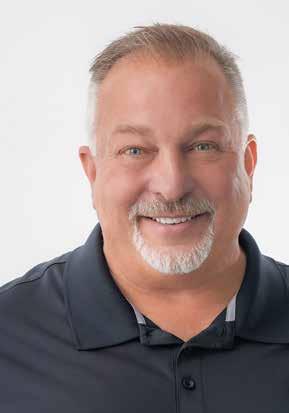
: DEAR NICK
- - - - - - - - - - - - - - - - - - - - - - - - - - - - - - -
52 THINKMAGAZINE.US

MEMBERS GET OVER $75,000 WORTH OF BENEFITS! International Association of Certified Home Inspectors EVERYT HING YOU NEED, ALL IN ONE PL ACE.




















































































































































































 By Nick Gromicko, CM and Kate Tarasenko
By Nick Gromicko, CM and Kate Tarasenko

































 Northern Lights
Northern Lights
































